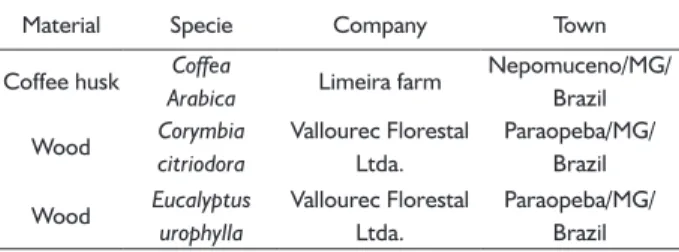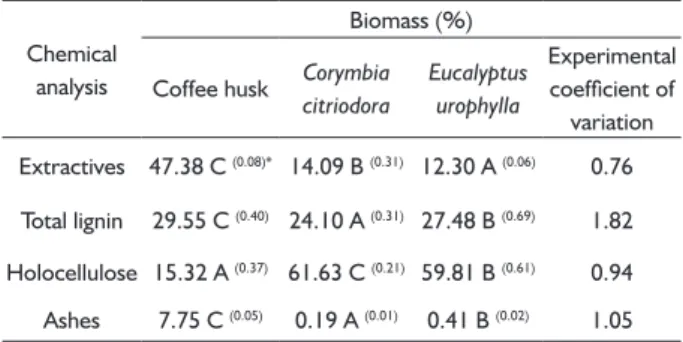RESULTS AND DISCUSSION Biomass chemical characterization
Texto
Imagem




Documentos relacionados
With respect to the sample shape, the disk shape carried out to significantly higher drying rates only for D’água cultivar without blanching.. Blanching was significantly influent,
The aim of this study was to assess the influence of anatomical and chemical characteristics of Brosimum parinarioides Duck (amapá) wood, on its longitudinal permeability to the
The chemical constitution of the wood was influenced by the presence of reaction wood in the stem; tension and opposite wood showed lower levels of lignin and extractives and
In this study, thermogravimetric analysis (TGA), differential thermal analysis (DTA) and differential scanning calorimetry (DSC) were used to achieve the following objectives:
the final carbonization temperature reduced the gravimetric yield in charcoal, the content of volatile materials and hydrogen, with a higher content of fixed carbon, carbon and
The higher basic and apparent density values were found in the Corymbia citriodora , followed by Eucalyptus tereticornis , and Eucalyptus grandis , however, in general, for
Higher sand content leads to higher density values in these soils, when compared to more clayey soils such as RLs, since this higher amount of sand interferes
The increase of thickness occurred proportionally to the increase of glycerol concentrations, as shown in Table 2, proving the plasticizer incorporation into the structure of
